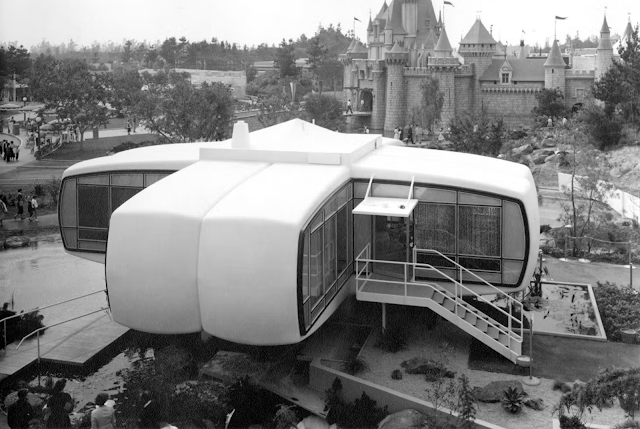In the late 1960s Mexican architect Juan José Díaz Infante Núñez (1936-2012) designed an all-plastic modular house for farm workers in Mexico. The fiberglass-reinforced polyester shell made them easy to produce and to construct.
My friend Arquetipo de Cambio has discovered a number of them around the Tijuana area. This example is the best so far. It is currently being operated as an AirBnB by an architect in Tijuana.
The structure has been at the current site since the 1990s. He has plans to remodel the interior, but in the meantime he was generous enough to let us in to check it out.

In Tlayacapan, Mexico, architecture firm PRODUCTORA constructed a house with shells the client had inherited. Originally, they were from the family's 1970s weekend house.
Side note: Some years back, a friend of mine found some of these just south of Tijuana. They have since been installed at another friend's house in Valle de Guadalupe.
This is the finished structure in Tlayacapan.
A base was added to give it more height, which looks great.
According to Diaz Infante's son, the inspiration for his design came from a 1960 trip to Disneyland where he saw the Monsanto House of the Future.
Diaz Infante and Mickey
 He received a US Patent for the design in 1970 and a mention in the October, 1974 issue of House Beautiful:
He received a US Patent for the design in 1970 and a mention in the October, 1974 issue of House Beautiful:
Not unattractive at all, the six-module house was designed by Architect Juan Jose Diaz Infante for sugar field workers and their families. A minimum house, with bath and kitchen, sold last year in Mexico for under $4,000. The largest star-shaped model sells for less than $10,000. Fiber-glass-reinforced polyester forms the outer and inner skins of the house shell; foamed polyurethane fills the inner wall cavity. Many U.S. producers have tried the modular housing path and many have failed. Interesting that a similar operation in Mexico thrives. Architect Diaz has made several attempts to market his design here, but so far. to no avail. However, at last word, he intends to keep trying. —JOHN H. INGERSOLL
He developed a number of models, including the Aztecalita, which can be seen at the
Museo de Arte Moderno in Mexico City.
1967 Installation in Mexico City
Model of modular concepts by Díaz Infante.
Source: Calli (1967), via RNDRD
Model of concepts by Díaz Infante. Let's call it the Mexican Metabolism, possibly influenced by the post-war Japanese biomimetic architectural movement.
Source: Calli (1967), via RNDRD
 He received a US Patent for the design in 1970 and a mention in the October, 1974 issue of House Beautiful:
He received a US Patent for the design in 1970 and a mention in the October, 1974 issue of House Beautiful: 

















